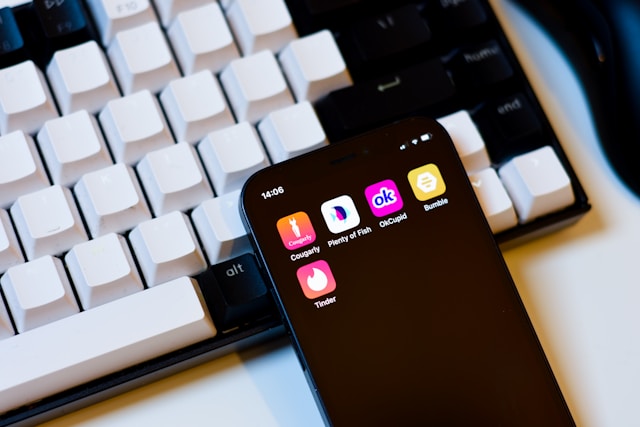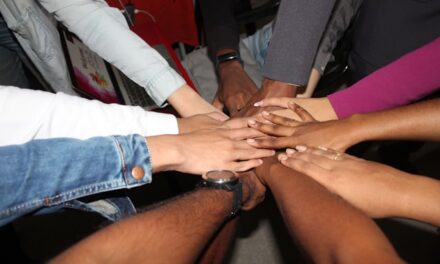For a lot of people, dating apps have become part of daily life—something you check like the weather or the news. But behind the endless swiping and chatting is a massive industry that’s still growing at full speed. In 2025, dating apps aren’t just social experiments—they’re some of the most profitable products in the app ecosystem.
The numbers make this clear. Analysts estimate the global online dating market will exceed $36 billion by 2027, and that projection doesn’t even account for niche platforms, premium features, or hybrid models combining real-world events with digital matchmaking. Whether it’s casual dating, matchmaking, or long-term relationship platforms, people are willing to pay for connection—and companies are eager to build for that demand.
So, it’s no surprise that entrepreneurs, tech founders, and even offline event organizers are eyeing the dating app space. But launching a dating app isn’t just about having a clever idea or copying Tinder’s swipe feature. It involves strategic planning, infrastructure, UI/UX design, and a clear understanding of the numbers behind the build. And it comes with dating app development cost.
That’s what this guide is all about. If you want to know what it takes, in dollars and cents, to make a dating app a reality, you’re in the right place. We’ll dissect all the way down to development and feature prices as well as infrastructure, design, and marketing post-launch. If you’re starting from scratch, if you’re detailing your budget for an investor meeting, getting dating app development cost down first is the key to making something last.
We will dissect the whole thing piece by piece.
What Influences Dating App Development Cost?
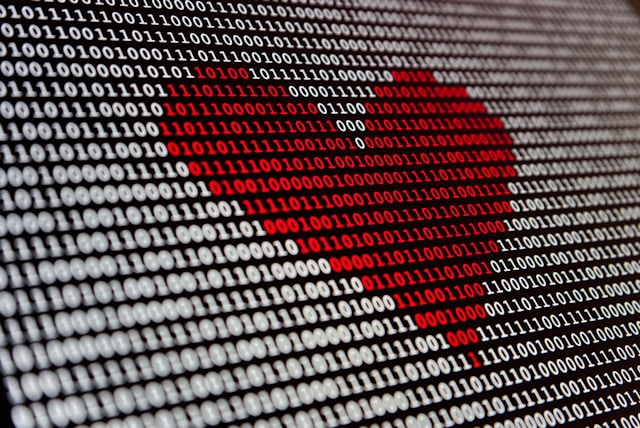
There’s a reason why estimates for dating app budgets swing so wildly. Some platforms are built for under $20,000, while others push past $200,000. The difference? It’s all in the details.
App Complexity and Feature Set
This is the big one. A swipe-based MVP with basic messaging is much cheaper to build than a multi-layered app with video chat, custom matchmaking algorithms, and subscription tiers. Every feature adds development hours, and some—like live video or AI-driven suggestions—require more backend power than others.
Technology Stack
Your tech choices impact both the speed of development and long-term flexibility. Native apps built separately for iOS and Android tend to be more expensive but offer excellent performance. Cross-platform frameworks like Flutter or React Native cut costs, but can limit customization in the future.
Development Team and Region
Hiring a solo freelancer comes with different costs—and risks—compared to working with an agency or dedicated product team. Location plays a role too. Developers in the U.S. or Western Europe often charge more per hour than equally skilled professionals in Eastern Europe, India, or Latin America. But higher rates don’t always mean higher quality—it’s about experience and communication, too.
Infrastructure and Scalability
Dating apps aren’t static. Once users start matching, messaging, and streaming, your backend needs to scale quickly. That means planning for cloud services, content delivery networks, secure authentication systems, and user data management. These aren’t always visible in early development, but they hit your budget over time.
Design and Testing
No one swipes on clunky apps. Investing in UI/UX design early helps avoid churn later. And cutting corners on testing is a recipe for bad reviews and app store rejection. Both of these areas deserve space in your budget—even if they don’t feel as “technical” as code.
So, when you’re comparing dating app prices, the real question is: how far do you want to go? The answer determines how much you’ll need to spend.
Feature Breakdown: Where Your Budget Goes
When it comes to building a dating app, not all features are created equal. Some are essential and expected by users, while others are optional—but powerful—add-ons that can set your app apart. Each one carries a dating app development cost, and knowing where the money actually goes is key to planning your budget.
User Sign-Up and Login
This is the first thing your users interact with, and it needs to be simple, fast, and secure. Most dating apps offer multiple options: email and password, phone number verification, or third-party login through platforms like Facebook, Apple, or Google.
Adding social logins increases convenience for users but also adds to your backend complexity and API integration efforts. Expect to spend $2,000–$5,000 depending on how many login options you include and whether additional verification features like two-factor authentication are required.
Geolocation and Matching Logic
Location is at the heart of most dating apps. Whether users are looking for someone nearby or searching globally, you’ll need to integrate real-time location tracking and a system for filtering users based on distance.
Developing efficient matching logic—especially one that adapts to user preferences—requires more than a basic database query. It involves user profiling, interest tagging, and behavior analysis. Combined with geolocation, this can take up a significant portion of your backend budget. Estimated cost: $8,000–$15,000.
Swipe Interface and Profile Browsing
The “swipe right/swipe left” design popularized by Tinder is now a standard in the industry. But just because it’s common doesn’t mean it’s easy to build.
Creating a fluid, responsive interface for browsing profiles involves both front-end and backend coordination. You’ll also need a way to cache nearby profiles and manage user interactions in real time. Depending on whether you’re implementing a basic swiper or something more advanced like animated transitions or gesture-based actions, expect to spend between $6,000–$12,000.
Messaging and Video Chat
No dating app is complete without a way for users to communicate. Text messaging is typically the starting point, but modern apps increasingly include voice and video chat.
Messaging can be built using third-party APIs like Twilio or Sendbird, or you can opt for custom solutions. Adding end-to-end encryption, typing indicators, and media sharing increases the workload.
Video chat is even more complex. You’ll need a reliable streaming infrastructure and solid support for handling call interruptions, permissions, and device compatibility. Messaging ranges from $4,000–$8,000, while adding video functionality can raise that to $10,000–$25,000.
Admin Panel and Moderation Tools
A powerful backend dashboard helps you manage users, flag inappropriate behavior, and ensure your platform stays safe. Admin tools should include analytics, content management, user reports, and manual moderation capabilities.
It may not be user-facing, but this part of the build is vital. Skipping it leads to bigger problems down the line. Expect to invest $6,000–$10,000 depending on how advanced your admin needs are.
Monetization Systems
Your app won’t just be a tool for connection—it’s a business. That means integrating monetization from the beginning. Most dating apps make money through:
- Subscriptions (premium accounts with added perks)
- In-app purchases (super likes, boosts)
- Advertising integrations
Each of these needs to be tied to secure payment gateways and user data management systems. Stripe and PayPal are common integrations, but some developers choose custom solutions for more flexibility. Budget $5,000–$12,000 for complete monetization setup.
Optional Advanced Features
Once your core product is solid, you might consider investing in features that offer real differentiation:
- AI-based matchmaking that learns from user behavior
- Real-time video speed dating
- Gamification features like streaks, quizzes, or points systems
These elements not only increase engagement but also introduce new development layers—AI modeling, analytics, and advanced UI components. These extras can cost anywhere from $10,000 to $40,000+ depending on complexity.
At the end of the day, dating apps cost what you decide to build. An MVP with core features might start around $25,000, but a full-featured, scalable app with real-time video and AI enhancements can easily climb into six figures. Knowing what you need—and what can wait—is the smartest way to manage your build.
Design, UX, and Branding Costs
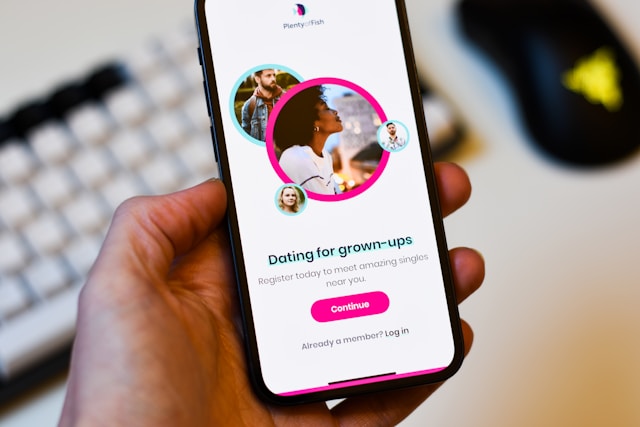
Your application will be tested by the performance of your backend regardless of how robust it might be. In dating as well, first impressions count even more. A bad interface will instantly kill the sense of trust, and the slick, well-looking experience will make the user want to stick around, search, and engage.
It’s more than color palettes and logos during the creation of dating apps. It’s more about crafting the emotional journey—a feeling a user gets when swiping, conversing, or awaiting the first match alert. And great UX isn’t negotiable. From setting up the profile all the way down to navigation and micro-interactions, all must be intuitive, fast, and trendy.
Prices differ based on the level of customization you’ll be requiring. You may be able to get a freelance designer to modify a pre-designed template for between $1,500 and $3,000. If you’re dealing with a team on custom interface designs, animations, and brand imagery, you could be paying between $5,000 and $12,000. This would typically involve:
- Branding and logotype creation
- Typography and visual hierarchy
- UI elements (cards, icons, buttons)
- Interactive Transitions and Animation
- Responsive design for iOS and Android
Valuable also is usability testing. Feedback loops from actual users can lead to the very changes that result in all the difference between a forgettable application and a sticky one.
It’s easy when building an MVP to cut corners with the design in the interests of saving money or time. But the end result generally leads to higher churn and negative first impressions—two things that cost more down the line. A well-designed dating app doesn’t look more beautiful—it works better, makes people trust it sooner, and builds the foundation for brand loyalty.
Backend and Infrastructure Considerations
Behind every dating app that looks smooth and effortless is a serious amount of backend infrastructure working nonstop to keep everything stable, fast, and secure. If you’re serious about scaling your app—or even just launching with confidence—your backend planning needs just as much attention as your user interface.
The backend is where all the logic lives. It handles account creation, data storage, messaging, matching algorithms, and everything in between. A poorly built backend can slow down searches, lose user data, or buckle under the pressure when your app gains traction. That’s not something you want to deal with after launch.
Most modern apps rely on scalable cloud services to stay flexible. Popular options include AWS, Google Cloud, and Microsoft Azure. These platforms offer tools like auto-scaling, load balancing, and content delivery networks to keep your app fast—even as user numbers grow. Hosting costs vary depending on traffic and storage, but for a dating app starting out, expect $500 to $1,500 per month.
Security is another major factor. Dating apps deal with sensitive personal information—photos, preferences, private conversations—so encryption, secure authentication, and regular vulnerability audits are a must. Compliance with laws like GDPR and CCPA adds extra layers of data handling and consent management.
Then there’s geolocation. Matching users based on location isn’t as simple as pinning dots on a map. You need geofencing, filtering, and real-time updates, all of which require efficient backend integration. Depending on your needs, adding location services can raise costs by $3,000 to $7,000 during initial development.
You’ll also need storage for user data, profile media, and chat histories. Cloud databases like Firebase or PostgreSQL are common choices, depending on your stack. And don’t forget about push notifications—they’re powered by backend systems too, helping you keep users engaged with timely alerts and reminders.
Infrastructure may not be flashy, but it’s the backbone of your app. Cutting corners here almost always leads to future pain. If you’re thinking long-term—and you should be—build your app to handle growth from day one.
Cross-Platform or Native? Development Approaches Explained
When planning a dating app, one of the biggest technical decisions you’ll face is choosing between native or cross-platform development. The choice directly affects your timeline, dating app development cost, and flexibility for future updates.
Native development involves building two separate apps—one in Swift for iOS and one in Kotlin for Android. This approach gives you full access to device-specific features, better performance, and smoother user experience. But it also doubles your development workload and budget.
Cross-platform development, using frameworks like Flutter or React Native, allows you to write a single codebase that works on both platforms. It’s faster, more cost-effective, and ideal for getting your app to market quickly. The trade-off? You may run into performance limitations or integration issues when handling platform-specific features like push notifications or in-app purchases.
Here’s a quick breakdown of pros and cons:
- Native Apps: Best for performance, long-term growth, and high customization
- Cross-Platform: Faster to build, lower cost, easier to manage early-stage updates
For startups, going cross-platform is often the smart move. It gets your MVP out the door, lets you validate your product, and gives you room to improve without sinking the entire budget upfront.
Cost-wise, a native app for both platforms can start at $50,000 or more. A cross-platform solution may land closer to $30,000–$35,000 depending on complexity and backend needs.
If you’re launching fast and lean, cross-platform is your friend. If you’re building for scale and long-term user growth, native may be worth the extra investment.
Marketing, Launch, and Post-Launch Costs

Building the app is just step one. The moment it’s live in the app store, your focus shifts to attracting users, keeping them engaged, and ensuring everything runs smoothly behind the scenes. And that’s where the second wave of expenses comes in.
Marketing a dating app takes more than a few social media posts. You’re competing in a saturated space where user attention is hard to earn and even harder to keep. To stand out, most startups invest in:
- Paid user acquisition (Facebook, TikTok, Google Ads)
- Influencer partnerships, especially on platforms like Instagram or YouTube
- App Store Optimization (ASO) to boost visibility in search results
- Public relations and outreach to blogs or media outlets
Depending on your market and goals, expect to spend anywhere from $5,000 to $20,000 just to get your first 5,000 users. And if you’re aiming for aggressive growth, those numbers climb quickly.
Post-launch maintenance is often underestimated. Apps aren’t “done” when they launch. You’ll need a budget for:
- Bug fixes and performance updates
- Feature improvements based on user feedback
- Ongoing testing for new devices and OS updates
- Server and hosting expenses as your user base grows
It’s smart to set aside 15–25% of your initial dating app development cost for ongoing maintenance each year. So if your build cost $60,000, plan on spending at least $9,000 to $15,000 annually to keep things running smoothly.
Then there’s user support—even if your app is flawless, you’ll still get questions about accounts, payments, and functionality. Hiring support staff or outsourcing a help desk adds to your operating budget.
Long-term success in the dating app space depends on more than good code. Without a solid launch and support strategy, even the most well-built app can fizzle. But if you invest smartly, that initial growth curve can lead to real traction—and real revenue.
Scrile Connect: A Smarter Way to Build Your Dating Platform
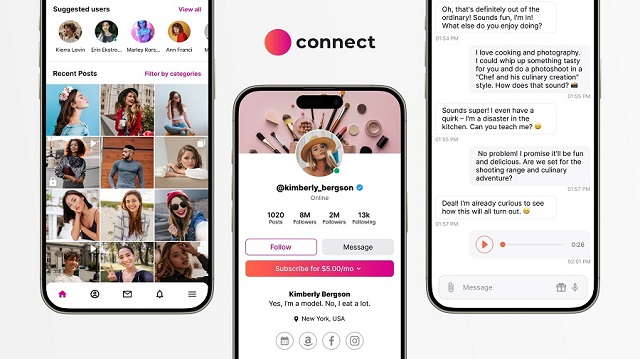
Most dating app builders promise a quick launch. But quick doesn’t always mean right. If you’re aiming to create a real business—not just an app—then Scrile Connect offers a smarter way forward.
Scrile Connect is not a ready-made SaaS product, but a full-cycle software development service, specifically created for deploying secure and scalable dating websites. It’s not a plug-and-play solution—it’s a custom solution based on what you really need.
That starts with control. With Scrile Connect, you’re not beholden to someone else’s design system or app builder limitations. You have a custom UI/UX design that reflects your brand and user experience visions. From visual look and feel to extremely detailed user flows, it’s all designed to your niche and the way your users behave.
You also have a full set of features right out of the box:
- Customizable and private user profiles for advanced users
- AI-matching, if you want smart logic that improves over time
- Intrinsic monetization tools like subscriptions, tipping, or pay-per-message
- Built-in payment gateways, so users can pay safely
- Moderation tools and control panels, with full control in your hands
- Real-time video and chat capabilities for more engaging user interaction
- White-label infrastructure, so your brand comes first—not a third-party provider
That’s the key. With Scrile Connect, you’re in control of the platform. The code, the data, the business logic—yours. You’re not “renting” access to somebody else’s backend. You’re building a product that you can grow, evolve, and benefit from on your own terms.
Scalability is built in from day one. Whether you’re launching locally or planning for global reach, the system is architected to support high traffic, fast load times, and robust security—including GDPR-compliant data handling.
When people talk about dating app development cost, they often forget the cost of redoing bad choices. A quick-and-cheap builder might save money in month one, but it’s usually outdated or limited by month six. Scrile Connect avoids that cycle entirely by doing it right the first time.
So if you’re serious about launching a modern, flexible, and profitable dating platform in 2025, Scrile Connect should be on your radar. It’s more than a development service—it’s a strategic partner for long-term growth.
Conclusion
If you’re planning to develop a dating app, don’t let your budget revolve around code alone. The real cost of launching a successful product includes design, user experience, marketing, and the tools you’ll need to grow. Understanding your full dating app development cost is what separates rushed launches from sustainable businesses.
Even a basic MVP can run $30,000 or more. Add custom features like geolocation, video chat, or AI-powered matching, and you could easily reach $100,000+. But the payoff is there. With the right strategy, your dating app becomes more than a product—it becomes a revenue stream, a brand, a long-term asset.
Just don’t cut corners where it matters most. Building on shaky foundations only leads to rebuilding later. That’s why working with the right development partner can make or break your success.
Scrile Connect isn’t just a vendor. It’s a team of developers, designers, and product thinkers who specialize in dating, social, and video-based platforms. They don’t offer cookie-cutter apps—they build tailored solutions that match your goals, scale with your audience, and support monetization from day one.
So if you’re serious about building something real—something that lasts—explore Scrile Connect today. It’s not just a smart investment. It’s the first step toward launching a dating app that actually works.
Read Also
How Do Dating Sites Make Money? – Explore key revenue streams, from freemium plans to VIP perks and ad monetization.
How Much Does It Cost to Build a Dating Website? – Understand development costs, feature impact, and budgeting tips.
Make a Dating Website – A practical guide to creating your own dating platform from idea to launch.
Online Dating Website Developer – Find the right development team to bring your dating concept to life.
Build a Dating App Like Tinder – A blueprint for building a swipe-based dating experience from scratch.

